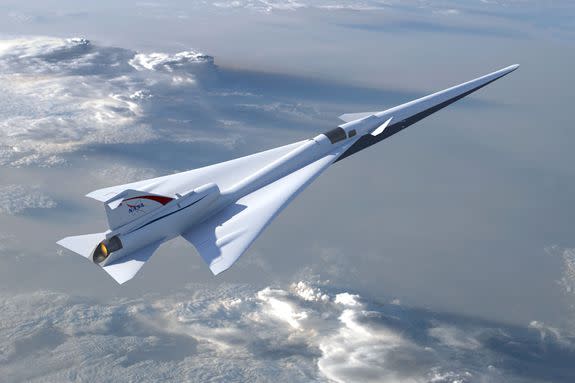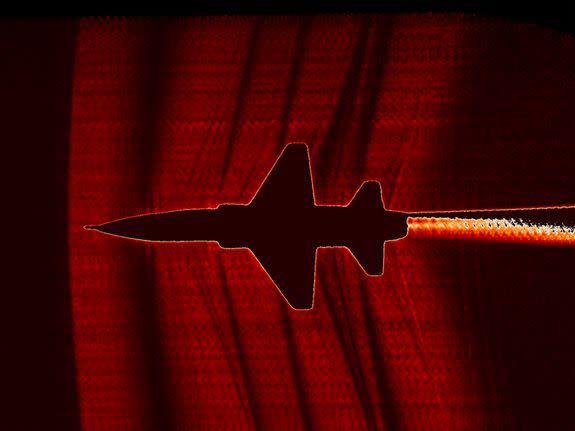NASA's X-Plane is designed to fly at supersonic speeds without the sonic boom

NASA wants to prove that it can fly a plane faster than the speed of sound without blasting American neighborhoods below with sonic booms.
Previously, commercial supersonic travel had been limited to the Atlantic Ocean, where people wouldn't be jarred awake by planes traveling overhead at more than 760 miles per hour. But with an innovative plane design that might subtly morph in the air to tame sound waves, NASA hopes to build a quieter supersonic plane that would revolutionize travel.
Our cross-country flight times would be cut in half. NASA calls it the X-Plane, and the agency just awarded the aerospace and defense company Lockheed Martin the $247.5 million contract to build the first one.
SEE ALSO: Finding alien life won't cause chaos and panic, according to scientists
At a news conference Tuesday morning, NASA said that this first X-Plane is a data-collecting experiment expected to take flight in 2021.
The plane will be 94-feet-long, smaller than today's medium-sized commercial aircraft, like the popular Boeing 737. It will typically cruise around speeds of 1.4 Mach, which is approximately 940 mph when traveling at 55,000 feet, according to a NASA spokesperson.

Image: NASA
Today's commercial airliners typically travel between 550 and 590 miles per hour, far short of the 767 mph speed of sound.
NASA aeronautics engineers underscored that this plane isn't a prototype for a defense mission or a private jet — but an experimental plane intended to fly over American communities and see if it is quiet enough to be a real, usable technology.
NASA's goal is to not produce a sonic boom at all, but something that sounds more like a soft thud.
"I’m trying not to use the word sonic boom," said Peter Coen, project manager for NASA’s Commercial Supersonics Technology Project. "I’m trying to ban that from everyone’s vocabulary."
Getting a plane to produce a thud, as opposed to a thunderous blast, broadly means controlling the strength and position of the shock waves produced by the supersonic-speeding plane as it zooms through the air.

Image: NASA
This is something Lockheed Martin and NASA flight engineers will spend the next couple years developing, so by the time a sound wave hits the ground — possibly in a neighborhood near you — it's weakened to a thump, "not a boom," said Coen.
Lockheed Martin has already designed much of the sleek plane.
If all goes as planned, the experimental plane will make its first flight in 2021. Then, after NASA ensures the plane is safe and passes "acoustic validation tests," the aircraft will begin flying over a variety of U.S. communities in 2023. These flight tests will run through 2025.
"We’ll be flying over medium-sized cities, urban towns, and rural populations," said Ed Waggoner, program director for NASA’s Integrated Aviation Systems Program. "It will be representative of populations that will be exposed to these sounds."

Image: NASA
The X-Plane tests will fly over large 50-square-mile areas, giving NASA a diversity of Americans to survey about the low-booms they're hearing — and if they notice them at all.
Today, civilian supersonic flights over land are banned. But once NASA gets feedback from the public, this information can be used to not just advise plane manufacturers in the U.S. of how to build low-boom planes, but engineers all over the world.
"One thing we hope this data will give the international community is that noise level," said Coen. "If your airplane produces less than X [sound decibels], it’s okay to fly over land."
